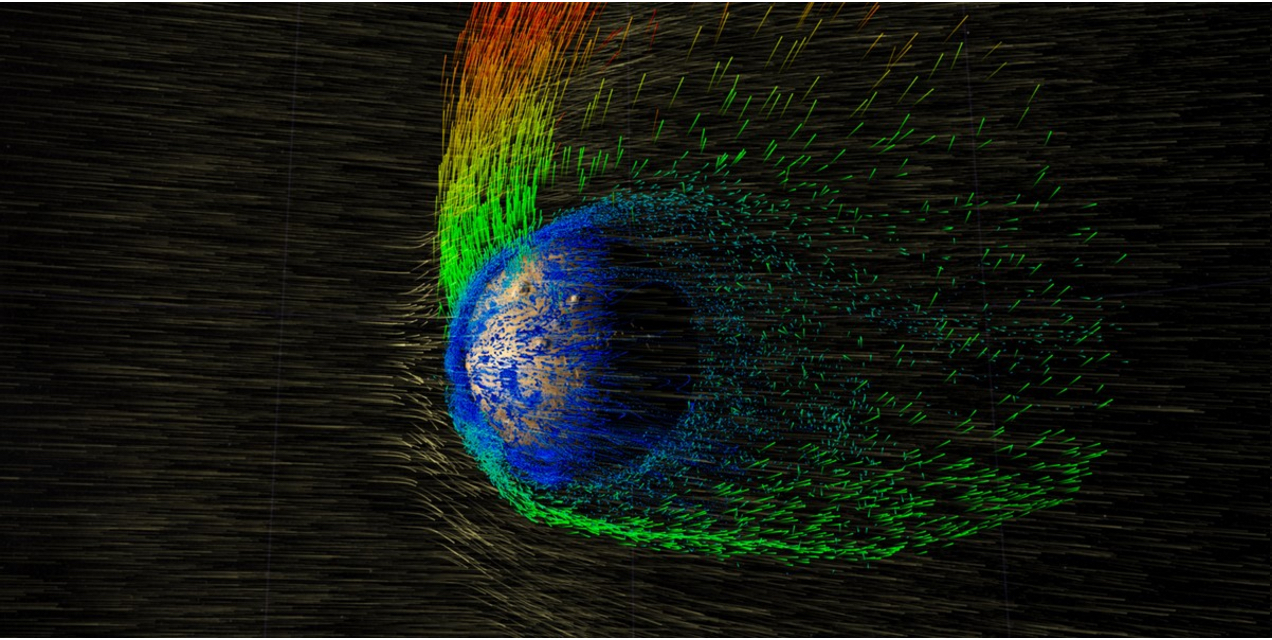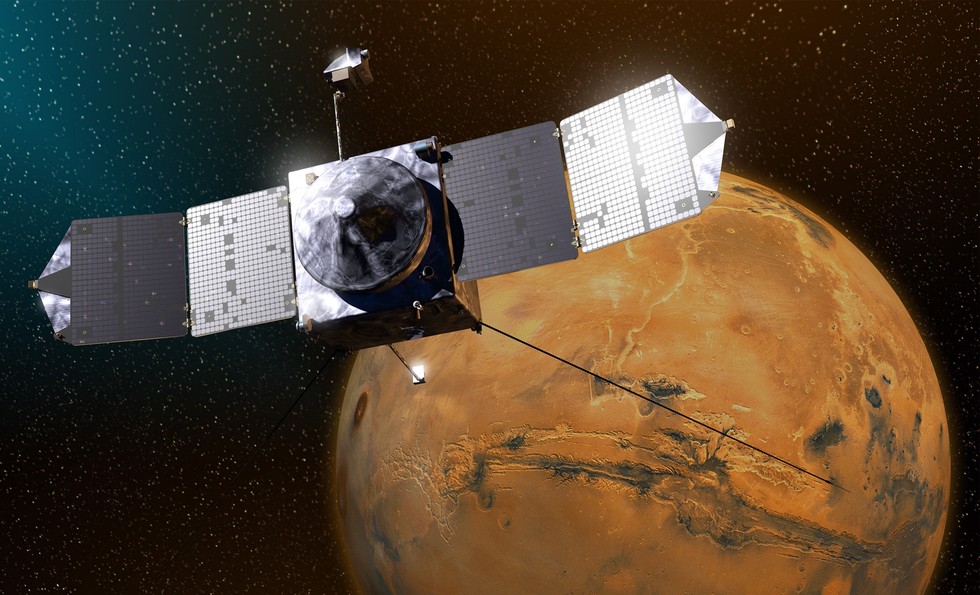Interstellar Clouds Eroded Martian Atmosphere

A long time ago, Mars had an atmosphere thick enough to allow running water on its surface. But today these vast gullies — and features that some scientists interpret as ocean shorelines — are bone-dry.
Something thinned the Red Planet's atmosphere over time, and there's a mission in orbit to find out how, when it happened and how quickly.
New results based on observations from MAVEN (Mars Atmosphere and Volatile EvolutioN Mission) have found a possible new source for losing the atmosphere. For years, scientists have known that the solar wind — that stream of charged particles coming from the sun — can strip away hydrogen molecules on Mars. The new study suggests that interstellar clouds are also partially responsible.
RELATED: Mystery Solved: Water DOES Flow on Mars
"MAVEN made it clear that ionizing radiation from the sun is the main driver as we it see now. I agree with those results 100 person, and am looking at geological timescales where encounters with interstellar clouds also becomes important," said lead author Dimitra Atri, of the Blue Marble Space Institute of Science, in an email interview with Discovery News.
The changes come as our solar system moves around the galaxy, Atri explained. From time to time, we move through interstellar clouds — vast, dense clouds of gas and dust — in events that last for about a million years. This has happened at least 135 times since the solar system was formed 4.5 billion years ago, Earth's geological records suggest. Each time, the gas and dust in the cloud strike the solar wind and create a bow shock. This shock accelerates charged particles (protons), which Atri suggests will make Mars lose 0.5 percent of its atmosphere each time.

Because each of these events is so long — roughly a million years apiece — Atri's calculations suggest that over time, they contributed to losing half of the Martian atmosphere. Other events attributed to Martian atmosphere loss, such as solar flares and supernovae, have a smaller contribution; Atri says even the strongest solar flare has eight times less magnitude on the escape of the Martian atmosphere than one pass through an interstellar cloud.
Get the Space.com Newsletter
Breaking space news, the latest updates on rocket launches, skywatching events and more!
WATCH VIDEO: Atomic Oxygen Found On Mars! What Does It Mean?
"This study can be extended to other planetary atmospheres as well," he added. "The most important thing I found was the planetary magnetic field. If a planet, like the Earth, has a strong magnetic field, these particles will not be able to penetrate its atmosphere and it will be able to preserve its atmosphere."
Atri hopes to follow up with the research by looking at historical solar events and how they affect the Martian atmosphere. His current study was published in the Monthly Notices of the Royal Astronomical Society.
Originally published on Discovery News.
Join our Space Forums to keep talking space on the latest missions, night sky and more! And if you have a news tip, correction or comment, let us know at: community@space.com.

Elizabeth Howell (she/her), Ph.D., was a staff writer in the spaceflight channel between 2022 and 2024 specializing in Canadian space news. She was contributing writer for Space.com for 10 years from 2012 to 2024. Elizabeth's reporting includes multiple exclusives with the White House, leading world coverage about a lost-and-found space tomato on the International Space Station, witnessing five human spaceflight launches on two continents, flying parabolic, working inside a spacesuit, and participating in a simulated Mars mission. Her latest book, "Why Am I Taller?" (ECW Press, 2022) is co-written with astronaut Dave Williams.









